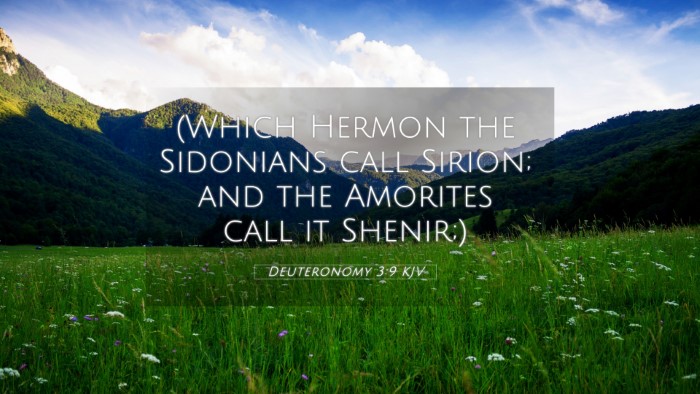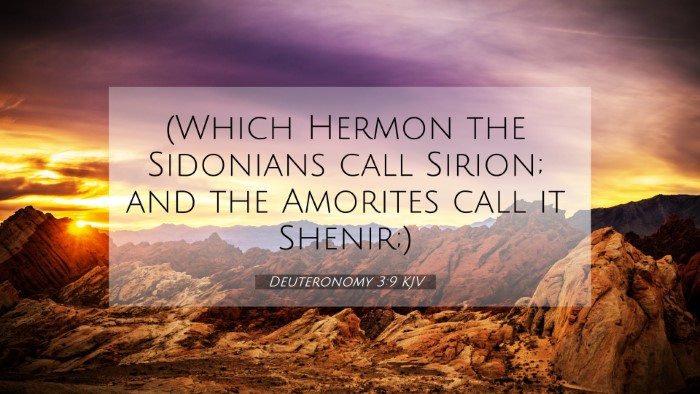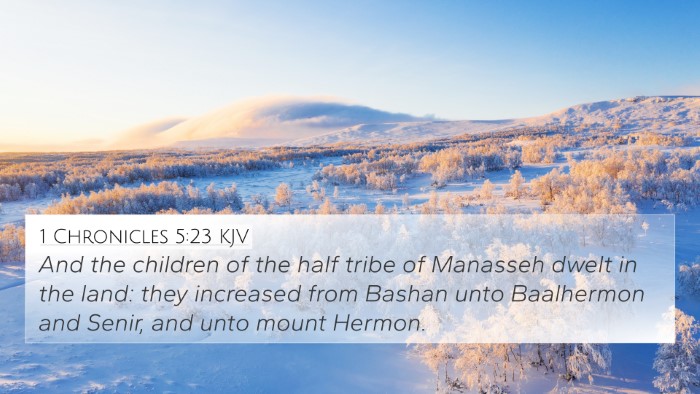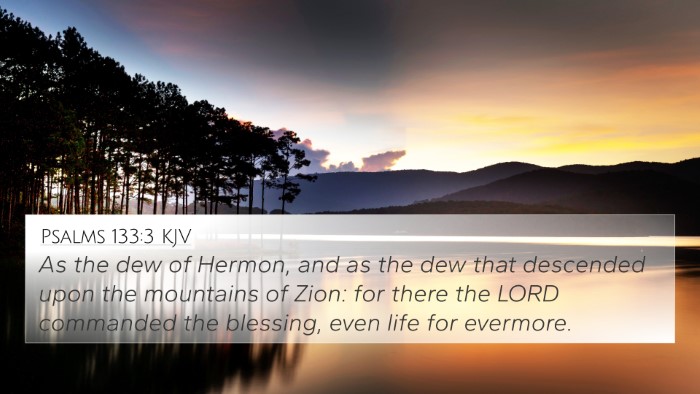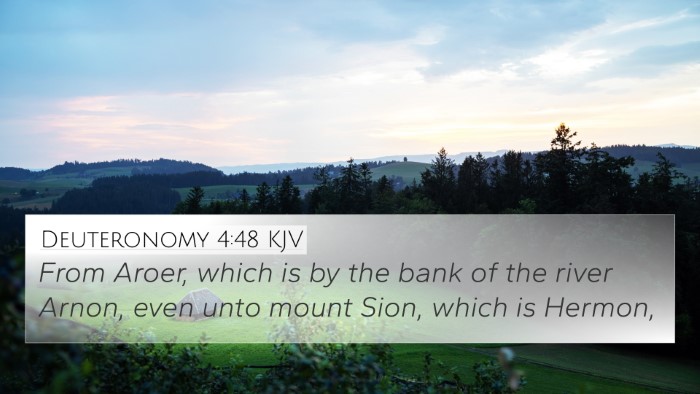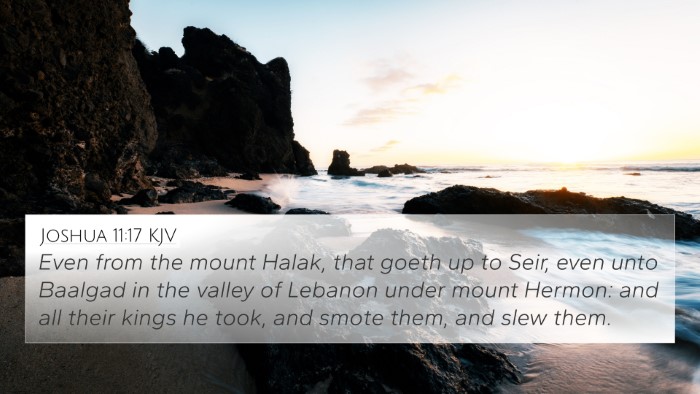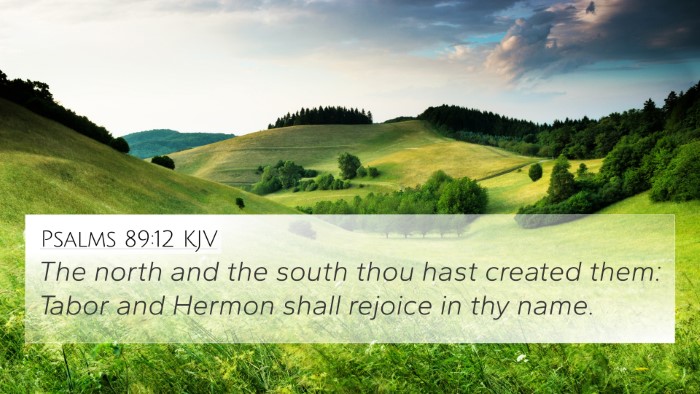Understanding Deuteronomy 3:9
The verse Deuteronomy 3:9 states:
"(Which Hermon the Sidonians call Sirion; and the Amorites call it Shenir.)"
This verse highlights the different names assigned to the mountain Hermon by various tribes, denoting not only geographical significance but also cultural diversity. Below is a summarized interpretation combining insights from notable public domain commentaries.
Summary of Insights
Matthew Henry's Commentary
Matthew Henry emphasizes the importance of place names in the Bible as indicators of historical and cultural context. In this case, the name "Hermon" signifies a prominent location known for its grandeur, representing a boundary that was significant during the Israelites' journey to the Promised Land. The different names assigned by the Sidonians and Amorites point to the diverse cultures surrounding Israel and how these cultural identities impact the narrative of the Israelites' conquest.
Albert Barnes' Notes
Albert Barnes elaborates on the geographical aspect by explaining that Hermon is a significant mountain range located at the northern boundary of the land of Canaan. He notes that the mountain was revered differently by various peoples, which fosters an understanding of how land was perceived through distinct cultural lenses. This verse demonstrates the longstanding connections between Israel and neighboring cultures, reflected in their differing nomenclature.
Adam Clarke's Commentary
Adam Clarke adds an additional layer by discussing the affiliation of both names with local tribes. He points out that the name "Sirion" is used to reflect the Sidonian perspective, while "Shenir" denotes the Amorite interpretation. This showcases the differences in perception and the tribal disputes over land ownership, underscoring the contention and diverse identities experienced by Israelites in their conquest.
Connections to Other Bible Verses
Deuteronomy 3:9 provides an opportunity for deeper theological reflection. Here are ten cross-references that relate to this verse:
- Joshua 11:3 - References the kings of the Canaanites who inhabited the mountains.
- Psalms 68:15-16 - Mentions Mount Zion and Mount Hermon, signifying its grandeur.
- Numbers 34:11 - Discusses how boundaries of the Promised Land include relevant geographical features.
- 1 Chronicles 5:16 - Indicates how tribes settled in areas including Gilead, bordering Hermon.
- Deuteronomy 3:8 - Precedes this verse and highlights Israel’s conquests in the region.
- Matthew 17:1 - Describes the transfiguration of Jesus on a high mountain, often associated with Hermon.
- Daniel 11:41 - Refers to the geographical significance of the land regarding prophecy.
- Luke 9:28 - Connects with the theme of mountains as places of revelation and divine interaction.
- Micah 2:12 - Explores themes of gathering and restoration in the land.
- Hebrews 12:22 - Alludes to Mount Zion, contrasting with mountains like Hermon, symbolizing different spiritual realms.
Thematic Connections
The names Hermon and its alternatives encourage thematic Bible verse connections related to:
- Geographic identity and its spiritual implications.
- The cultural perceptions of land by surrounding nations.
- Continuity of God’s promise to Israel amidst neighboring conflicts.
- Symbolism of mountains in biblical narratives concerning divine encounters.
Researching Cross-References
For those interested in cross-referencing Biblical texts or comprehensive Bible cross-reference materials, consider utilizing the following tools for Bible cross-referencing:
- Bible concordance to locate keywords and themes.
- Cross-reference Bible study guides that delineate connections.
- Studying parallel accounts in different Gospels for comparative analysis.
- Using Bible chains for thematic explorations through various books.
Conclusions
Deuteronomy 3:9 serves not only as a geographical marker but also as a reminder of the rich cultural intersections in biblical history. Through the cross-references and insights derived from commentaries, readers can engage in deeper study, uncovering the multidimensionality of God’s Word.
Whether you are seeking to understand connections between Bible verses or exploring tools for Bible cross-referencing, the contextual backdrop of this verse invites you into a more comprehensive journey through the Scriptures.

